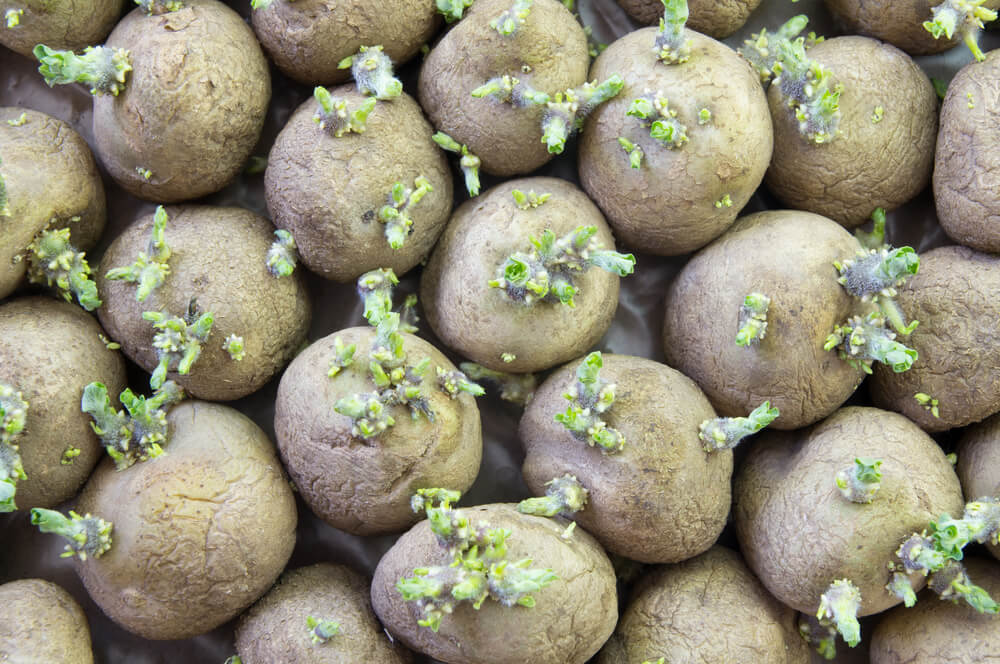The research findings will make it possible to cultivate new vegetable varieties with a reduced amount of toxins

Although human deaths from eating green potatoes are quite rare, such poisonings frequently cause illness and death in farm animals. Symptoms include damage to the digestive system, as well as neurological effects such as loss of sensation, nightmares and hallucinations. In severe cases, a heart rhythm disturbance is caused leading to death. Those responsible for this are the toxic substances solanine and schonine found in potatoes, whose concentration in the tubers increases significantly following exposure to light and during the ignition of the tubers, and protects them from disease agents.
The solanine and shakonine belong to a large family of thousands of substances called glycoalkaloids, which are also found in other edible plants from the solanine family such as tomatoes and eggplants. These substances have been known for over two hundred years, but their production pathway in the plant is unknown. Prof. Assaf Aharoni And the members of his group from the department of plant sciences at the institute recently took an important step in this direction, when they managed to map the biochemical pathway responsible for the creation of glycoalkaloids from their raw material - cholesterol. The findings of the research will make it possible to cultivate new vegetable varieties with a reduced amount of toxins, and to improve varieties through hybrids with wild varieties that were banned for use because of their high glyco-alkaloid content. On the other hand, increasing the concentration of glycoalkaloids in the parts of the plant that are not edible, or in plants that naturally do not contain these substances, will increase their ability to defend against diseases.
in the first level of the mapping work, which was published about two years ago in the journal The Plant Cell, the scientists were able to identify the first gene in the glycoalkaloid production pathway. In the current research, which was recently published in the journal Science, the scientists used that first gene as a "signpost", which directed them to the rest of the route: by comparing the expression patterns of genes in different tissues of potatoes and tomatoes, they were able to identify genes similar to the first gene, and thus discover a series of genes involved in the glycoalkaloid production pathway . Damage to the function of one of these genes prevented the accumulation of glycoalkaloids in potato tubers and tomatoes. Later, the scientists deciphered the role of each of the genes, and sketched the complete process, consisting of ten steps, during which a cholesterol molecule turns into a glyco-alkaloid. Additional genes that have been identified are responsible for various "branches" in the pathway, leading to the creation of secondary substances, and for controlling the process.
Prof. Aharoni says that one night he sat in his house and repeatedly checked the list of candidate genes - based on an expression pattern - to play a role in the production pathway, when he suddenly came to an interesting insight: it seems that the plants protect their offspring from the possibility of inheriting a "half pathway" for the production of glyco- alkaloids, which may harm them. This possibility arose when he compared the locations of the genes in the genome, and discovered that most of them are combined in one sequence on chromosome 7 of the tomato and the potato. Two additional genes were found on another chromosome, but this segment also appears to have migrated from its original location on chromosome 7. The reason for the clustering of the genes is that partial activation of the glycoalkaloid production mechanism leads to the production of an intermediate substance that is toxic to the plant cells (so, for example, there are fungi that harm the plant through decomposition the glycoalkaloids for their harmful component). To reduce the chance of harmful partial inheritance, the plant centers the entire pathway in as small a genetic unit as possible.
The research was led by the post-doctoral researcher Dr. Maxim Itkin, and Dr. Eva Heinig, Dr. Oren Tsapadiya, Pablo Cardenas, Dr. Shmuel Bokovza, Dr. Sergey Malitsky and Dr. Ilana Rogachev from the laboratory of Prof. Aharoni, as well as Dr. Tamar Unger from the Center for Structural Proteomics at the institute, scientists from the University of Pune, India, and from the Institute for Plant Research in Vaningen, the Netherlands.
For the announcement on the Weizmann Institute website
